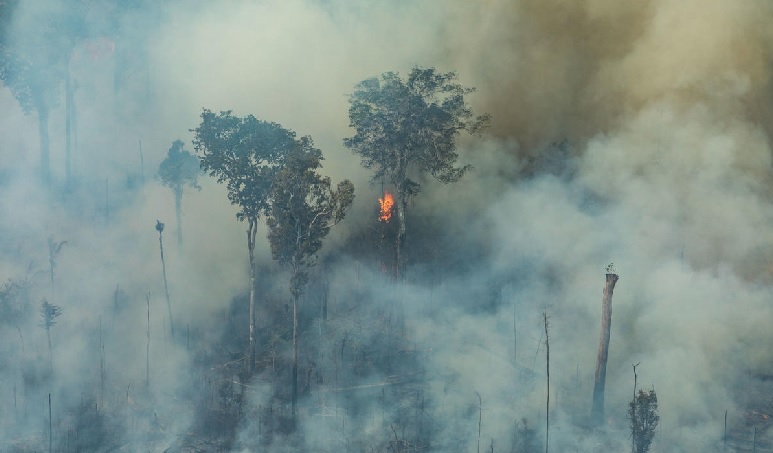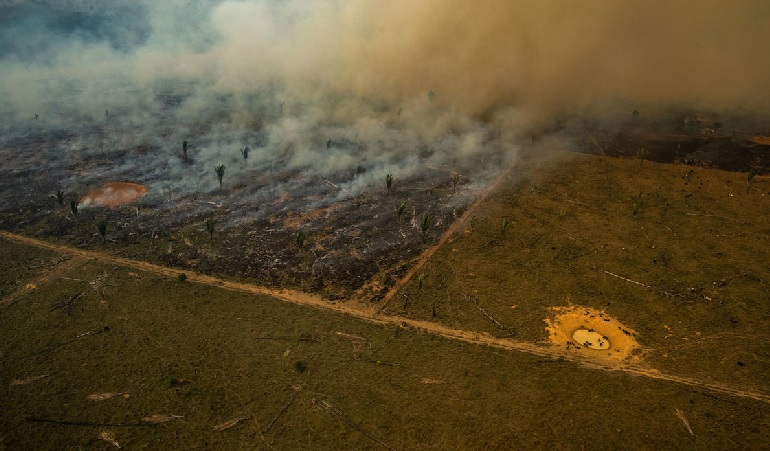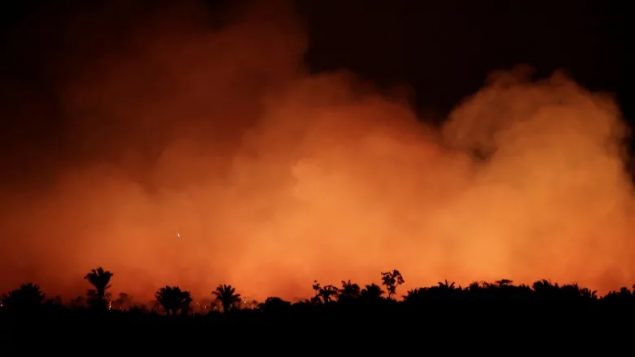Fires in Brazil’s Amazon rainforest are up over 145 per cent from last year according to Greenpeace, and many are blaming it directly on human causes. In fact many, including French President Emmanuel Macron, lay the blame at the foot of the Brazilian President, Jair Bolsonaro, who they say has been lax in enforcing regulations about protecting the critical rainforest. In fact many are saying his rhetoric and policies have encouraged farming, logging, mining, and ranching interests to clear more forest illegally for their own ends.
James Snider in Toronto says we should all be concerned about what’s happening there. He is the Vice President of science, research and innovation at World Wildlife Fund-Canada. We spoke on his mobile phone.
The rainforest in Brazil extends across more than 5 million square kilometres and has often been referred to as the “lungs of the planet”|
But the massive fires which are burning are not only adding to pollution and destroying the forest, but also the territory of vast numbers of indigenous peoples and plants and some 3 million creatures, many of which are found only in the rainforest.

Aerial view of a large burned area in the city of Candeiras do Jamari in the state of Rondônia. The fires threatens one of the world’s greatest biodiversity regions.(Photo: Victor Moriyama / Greenpeace), Amazon Burning Overflight
AT the G7 summit in Biarritz, leaders announced a cautious $20 million USD amount to help although what form that may take is not clear yet and many expect the amount will likely be increased. Canada’s Prime Minister later announced a Canadian contribution of C$15 million, some of that to take the form of sending personnel and equipment.
In the meantime, the Brazilian military has been called in to help fight the fires.

August 23, aerial view of burned areas in the Amazon rainforest, in the city of Porto Velho, Rondônia state. According to Greenpeace, “[1] Of the 23,006 hot spots recorded in the Amazon in the first 20 days of the month, 15,749 used to be forest or recently deforested areas, 5,445 in pasture areas, 832 in natural formation and 602 in agricultural areas. Of the 6,295 heat sources recorded in the week of 16 August to 22 August, 1,201 (19%) were in Conservation Units and 364 of those (6%) in Indigenous Lands. (Photo: Victor Moriyama / Greenpeace)
Additional information







For reasons beyond our control, and for an undetermined period of time, our comment section is now closed. However, our social networks remain open to your contributions.